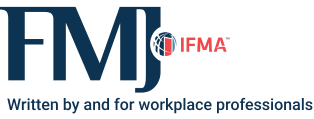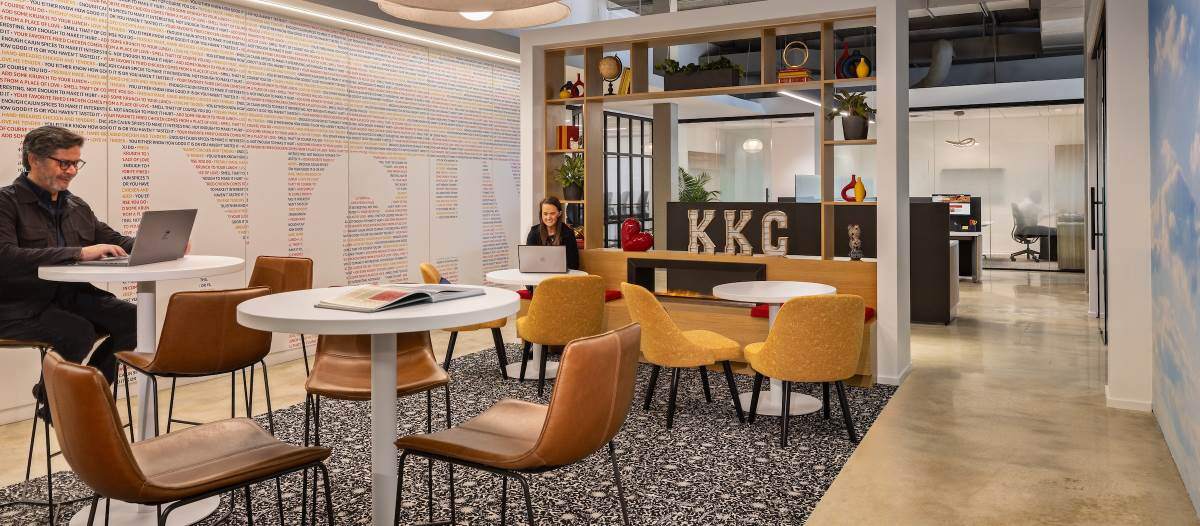Ensuring Workplace Wellness
FM’s role in the future office

Amid seismic change in the workplace, the FM role is also expanding beyond the central workplace to serve as a critical link between organizations, employees, service providers and other key parties, all of whom are likely operating from different locations on any given day. As a key connection between employees and employers, FMs provide immediate support and ultimately help bring organizations’ wellness values to life, wherever people may be working.
According to JLL’s recent Workforce Readiness Must Include Workplace Wellness report, more organizations are prioritizing employee wellness, and FMs will play a vital role in supporting holistic health and well-being among employees both in and out of the workplace.
Record stress fuels record resignations & a new approach to employee wellness
A Gallup poll affirmed what most people felt was true: 2020 was the most stressful year in recent history. Employment records bear this out, with a historic 47.4 million Americans quitting their jobs in 2021 alone — far beyond the previous record-breaking 36.3 million resignations marked in 2020, according to the U.S. Bureau of Labor Statistics and CNN analysis.
This so-called Great Resignation or Great Renegotiation was fueled by employees who cited a desire for more flexibility in where and how work gets done, better work-life balance and better management, among others. As ideas and attitudes about work have shifted, the workplace needs to evolve to meet those needs — emerging more productive, safer and human centric than before.
Additionally, leading organizations are also recognizing the urgency of taking a human-centric approach, including talking about and acting on mental well-being, due to the cost of business. Stress and burnout are estimated to cost the global economy US$278 billion annually, measured in rising corporate health care commitments, poor workplace performance and employee turnover.
For these reasons and more, it is only fitting that leading organizations are rethinking the role of the workplace in reducing stress and burnout, to actively promote complete wellness and inspire people to feel and bring their best selves to the workplace.
The workplace of the future will be designed for a new workplace management approach: Theory F, an approach that allows employees and business to flourish. Theory F begins with a simple premise: People who feel they can bring their whole selves to work, do their best work. This new approach to the workplace also encompasses entire ecosystems to include a range of remote work options.
At this point, FMs come in to provide authentic, human-centered workplaces where people feel supported. Employers will need more FM leaders who can bring organizational values to life in the day-to-day workplace environment.
Key ways FM teams can combat stress & improve employee experiences
To produce their best work, today’s top talent expects their employers to provide a workplace that is safe and secure — as a baseline. They also want tech-enabled, experiential workplaces that foster health and well-being across the workforce.
Here are FM strategies to support total health and well-being:
1. Reimagine FMs as experience ambassadors.
Fundamentally, great FM teams have always helped keep employee stress at bay by working to ensure facilities run optimally and without disrupting staff. In the workplace of the future, FMs can and should be stepping out from behind the scenes to more visible roles in employee care programs.
Innovative organizations are training facility staff as something of a multitalented hotel concierge who can blend the traditional “fix it” approach with the personalized touch of hospitality experiences. As the key connection between employees and employers, such roles can stimulate employee engagement and community across the workforce, while boosting morale, workplace pride and even employee loyalty among the FM team itself.
Amid the rise of hybrid work, designated Experience Ambassadors can help employees adapt to a fluid work environment with ease. By providing real-time support and facilitating community-building activities across work locations, these ambassadors can drive new processes and procedures to connect employees with well-being initiatives wherever they may work.
2. Capitalize on the positive impacts of physical environment to employee wellness.
Research has shown that views of nature can reduce levels of stress. In a Theory F approach to the workplace, design takes full advantage of environmental opportunities to reduce stress. If access to nature is not possible, FMs can incorporate simulated views, artwork, living plants, greenery, or the sound and sight of water to improve employee well-being.
Additionally, wellness zones can reduce environmental stress, offering employees the physical space to let their minds decompress from constant digital stimulation. Spaces that put wellness out in the open encourage employees to take a break and emphasize personal health. Designated tech-free spaces can be used to host wider team discussions and interactions.
The workplace can and should be a place that promotes healthy, energized employees to do their best work. By reducing workplace stress and creating environments to recharge, the workplace can support holistic well-being.
3. Implement digital wellness solutions.
In this increasingly hybrid world of work, organizations must be able to combine the best of human connection with digital experiences to empower and engage employees from anywhere. To help employees’ days run more smoothly and more productively — regardless of location — FMs can use digital solutions to seamlessly connect employees across the offfice, at home or anywhere that work takes place.
FMs can implement a digital hub to give employees access to the comforts of the office - ergonomic furniture, healthy food, office supplies and wellness offerings -- and program management to increase adoption and provide seamless connection to workers in all locations. This innovative program exists to give employees the time, space and platform to make positive, simple changes to their workday that improve wellness over time.
4. Partner with other departments like CRE, HR & IT.
More people are recognizing that a human’s whole health comprises more than just one aspect of well-being. It is time to bring that holistic view to workplace strategy, too. By working collaboratively across all departments that impact the employee workplace experience, FMs can help organizations achieve their vision of a successful wellness program that benefits employees and allows them to do their best work.
A promising new era for FM & employee well-being as a whole
Since 2020, FMs have risen to the ongoing challenge of reopening and maintaining a safe and secure workplace. Now, as more organizations seek a facility strategy that directly nurtures mental and physical well-being, FMs have a powerful opportunity to extend their impact even further, by playing a lead role in ensuring employees feel safe, healthy and supported at work.
Creating workplaces based on care is one way to ensure the right connections are made and maintained, whether workers are in the office, at home or in some third location. When employees feel their needs beyond physical safety and security are met, they can bring their whole, supported self to work. And that is swiftly becoming the new normal for workplace wellness.
Corporate leaders are currently laying out bold new workplace wellness visions. For FM leaders, the power is theirs to bring those ideals springing to life, one innovative facility strategy at a time.

Julie Wilkinson is global product owner, Workplace Experience at JLL where she leads product development of workplace experience and well-being solutions for clients. Her area of expertise is employee experience and the workplace journey with a focus on the hybrid workplace. She has over 20 years of experience in corporate real estate, operations and corporate hospitality. Wilkinson has transformed the workplace experience for clients across a variety of industries including financial services, technology, professional services and consumer products.
Read more on Occupancy & Human Factors and Workplace or related topics Workplace Utilization , Wellness and Well-being and Occupant Health
Explore All FMJ Topics









